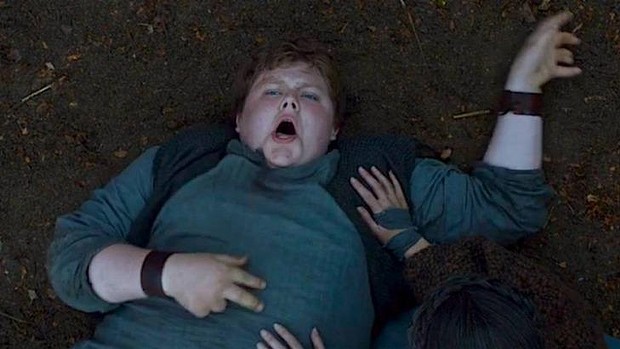by: Michael Shields
One case solved, another opened, and the game now dramatically changed….
The picture was starting to come into focus. It seemed as if the puzzle pieces were finally falling into place and we were beginning to get our head around the case at hand. We sensed that we were on the cusp of something, a breakthrough that would reveal, in full, the culprit. And with the villain disposed of, our heroes could move on, their thirst for satisfaction quenched. Yet, following one of the more exhaustive and compelling episodes of True Detective thus far, “The Secret Fate of All Life,” it seems, more or less, as if the starter pistol was just fired. The game has changed, the premise we had become accustomed to thoroughly upended, and the bullseye now rests square upon the shoulders of our supposed hero. Proving to be as unpredictable as it is dark and engrossing, True Detective triumphantly evolved in this season’s fifth episode.
It was becoming evident that Cohle was in hot water, we just weren’t aware the fervor of the blaze igniting the boil. Take a moment to ponder where this fifth episode commenced, and where it concluded. On the verge of solving the Dora Lange case, to finally bearing witness to the authentic reality of “the hero shot” ((Good to see you commit to something.” – Cohle)) through “the good years” ((Relatively of course – Hart’s domestic problems not only continued but intensified as his children age. And Cohle appeared as restless and unfulfilled as ever in his new, more traditional, lifestyle.)) and ultimately to the point where Detectives Gilbough and Papania lay all their cards on the table – the ride has taken us to an unlikely point, a divergence, where one story is concluding, and another more surprising one is beginning to unfold.
It was an interrogation in 2002 that really inverted our reality. As Cohle, the best box man in the game, wrenches yet another damning conviction, this time from pharmacy killer Guy Francis, the idea that the real killer in the Dora Lange case is still at large bubbles to the surface. “I’ll tell you about The Yellow King,” he says. And he goes on to talk about the involvement of “Big People” (Tuttle no doubt), stirring Cohle into a frenzy, the rebirth of an old obsession, and the introduction to a new chapter in our tale. “The black stars” ((According to “Cassilda’s Song,” a section of The King in Yellow the black stars are supposed to rise on some “strange” night.)) are ascending, and although we have seen the hideous face of the monster revealed to us as the closing of “The Locked Room,” it appears likely we will confront a more insidious form of evil before all is said and done.
It is interesting to watch the storyteller play with us, particularly in the juxtaposition of what is told in the interrogation room versus actuality. As we listen to Rust and Marty spout off about machine gun fire, we watch them slither through “cracker-ass security systems” and up to a backwater meth lab meth lab unmolested. We are toyed with, and eventually left unsure of what to actually believe. What was supposed to be a consultation, is in fact a probing interrogation into Cohle’s involvement in not only Doral Lange’s murder, or Stephanie Kordish’s parallel slaying in Lake Charles (where Cohle was photographed lurking around the crime scene), but also of the suspicious death of Billy Tuttle, who died in 2010, the same year Cohle resurfaced in state after falling off the grid, from “mixed medications.”
And thus, it is the lie that binds them together, the agreed upon narrative, that threatens to tear our heroes apart, and tumble this house of cards. “The Secret Fate of All Life” heaved us through the period of time between the original investigation and where we stand today, barreling us through Hart’s domestic strife, a softer side of Cohle, and directly into two new investigations, with Cohle searching for the “Big People,” and the hunter becoming the hunted as Papania and Gilbough question Cohle’s involvement. “I can see your soul at the edges of your eyes. It’s corrosive, like acid,” Dewall scolds Cohle. “Theres a shadow in you son.” It’s amazing, after five episodes with Cohle he remains as mystifying as ever ((Hart continues to be a confounding figure as well. Who would have imagined him smacking his daughter, or favoring vigilante justice in dealing with Reggie Ledoux?)). But we too see that shadow, which illuminates a damming glare of distrust in Rustin Cohle’s motivations.
“The Secret Fate of All Life” divulged in this episode was a hard pill to swallow. It is the claim, made initially by Reggie Ledoux (“What is that Nietzsche, Shut the fuck up!”) and then echoed by Detective Cohle 17 years later, that “everything we’ve ever done or will do we’re gonna do over and over and over again.” “Time is a flat circle,” we are told, and it is in moments like this where True Detective truly accells. Where it punctures the genre it allegedly embodies and becomes something so much more. As Cohle recounts the “membrane theory” he speaks of attaining a “fourth person perspective” that from this vantage point “space-time looks flattened, like a seamless sculpture. Matter in a superposition – every place it ever occupied. Our sentience just cycling through our lives like carts on a track. See, everything outside our dimension—that’s eternity. Eternity looking down on us. Now, to us, it’s a sphere. But to them, it’s a circle.” Them? An omnipotent being? An alien observer? Or – the viewer?
You see True Detective is self-aware. It understands and views itself as a narrative, in that it is not only a gritty crime drama, but also an existential philosophical anecdote about storytelling. As series creator Nic Pizzolatto tells it, “Is he (Cohle) a man railing against an uncaring god? Or is he a character in a TV show railing against his audience? Aren’t we the creatures of that higher dimension? The creatures who can see the totality of his world? After all, we get to see all eight episodes of his life. And we can watch him live that same life over and over again, the exact same way.” ((You know why the stories always the same 17 years gone, because it only went down one way.” – Hart)) Heady stuff, and an example of just the depth of substance we are dealing with here. Layers of significance. Narratives within narratives. It’s a mouthful, but a truly fulfilling meal to digest.
So, we are left, like Hart, with much to absorb. Papania and Gilbough’s case against Cohle is compelling, fantastically damning even. But are we buying their story? Who is the Yellow King? What is in Cohle’s storage unit? Is Cohle, a man who displays an unflappable, yet detached, moral code capable of such ills, such grotesque atrocities? Or is he a hero on an unwavering quest for justice? Was he steering the investigation where he wanted it to go? Or was the manhunt for Ledoux an honorable undertaking? Although linear in logic, the fact that Rust and Marty cleaned up the crime scene to their benefit doesn’t necessarily mean Cohle had an ulterior motive. With a straight face Cohle expressed to the investigating task force following the detectives finest moment, that he “walked away from the experience with a greater respect for human life.” But, we know how Cohle truly feels about humanity. What we don’t know however, is just how perverse and deep his apathy towards humanity may truly be?






